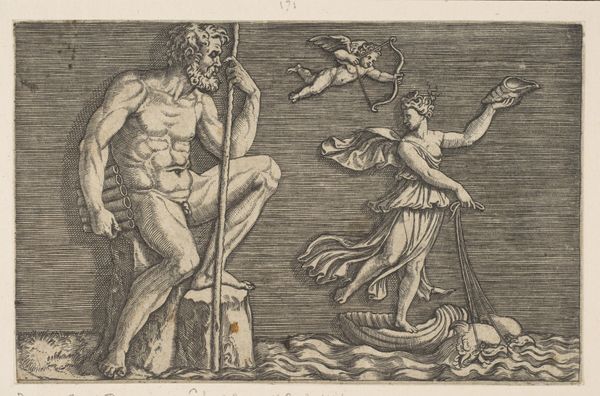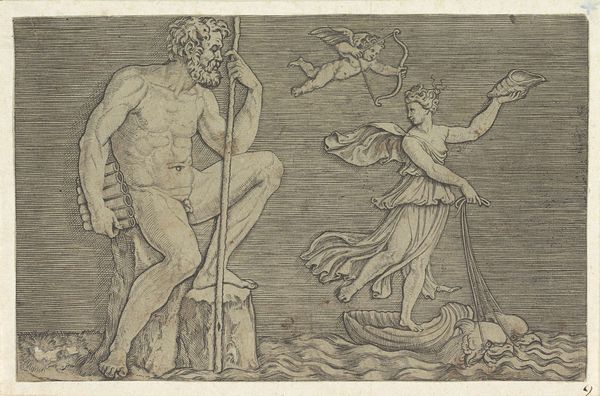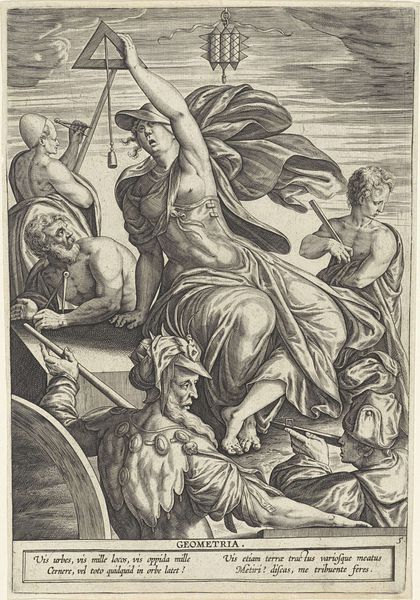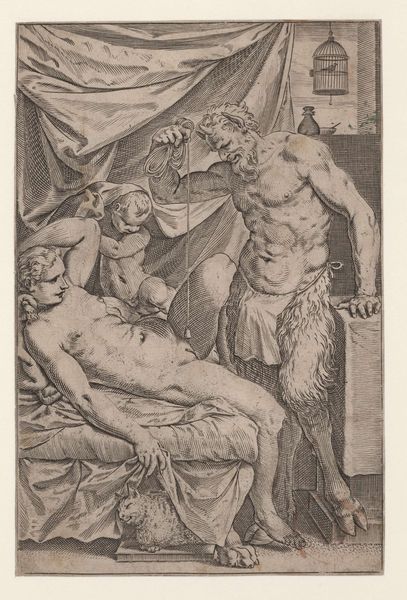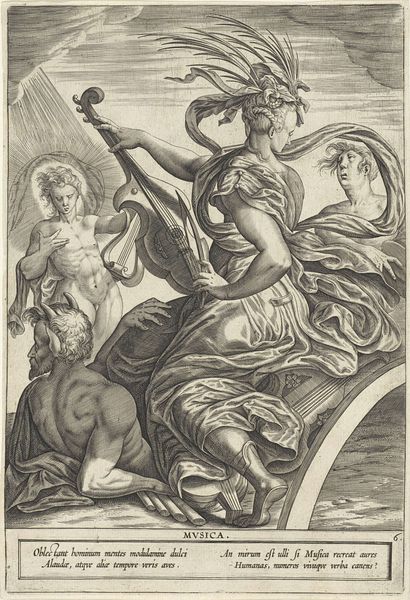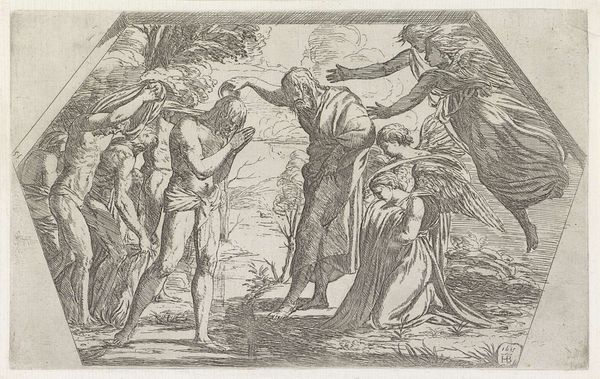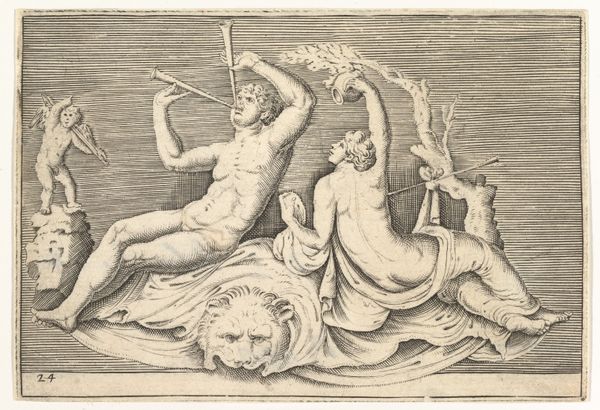
Dimensions: height 108 mm, width 170 mm
Copyright: Rijks Museum: Open Domain
Curator: This print, believed to be crafted between 1498 and 1532, captures the scene of "Galatea Escaping Polyphemus," now residing here at the Rijksmuseum. It's a beautiful example of engraving from that period. What springs to mind for you? Editor: Well, immediately, a feeling of both tranquility and unease washes over me. Galatea seems to glide, almost weightless, away from the hulking figure of Polyphemus who seems so weighed down by the ground and is clearly burdened by the fact of unrequited love, you know? Curator: Absolutely! There's such a dynamic contrast. Galatea's illuminated, fluid movement versus Polyphemus' shadowed, almost brooding stillness. He’s so immense, and she's so free; it really speaks to the power dynamics in this classical myth, doesn't it? Editor: It really does. Thinking about the mythological context, Polyphemus, the cyclops, is captivated by Galatea, a sea nymph. But, of course, she rejects his advances, and this print depicts her dramatic escape. The gaze here is key: Galatea's looking to the horizon, while Polyphemus looks forlornly, after her; meanwhile Cupid flies through the air, the agent of his pain. Curator: Right? You almost feel a pang of… sympathy, maybe? Even for a monstrous figure like Polyphemus. The way he's leaning on his staff, gazing… it’s like a heavy, unrequited sigh etched in ink. The artist even subtly adds the pipes as a token, an instrument of musical desire. And you know, considering that its maker is still officially unknown, its almost as if we ourselves are seeing, are viewing these lovers as Polyphemus is forced to view them. Editor: Yes! The detail is amazing given the medium – the meticulous lines creating such a range of textures and tones. But there's also something about the way the female form is depicted; Galatea's fleeing body represents an empowered vision. The scene can be read beyond the myth. I also appreciate how it opens up conversations about gender, power, and refusal. Curator: Precisely. It's a Renaissance image grappling with very contemporary questions, or rather reminding us these questions aren't at all new! It makes you think about agency, and desire. Who has it? How is it taken or expressed? Editor: Definitely. There are so many layers of meaning within a relatively simple composition. And it brings this ancient myth so vibrantly to life! Curator: It really does invite a modern reimagining of the tale!
Comments
No comments
Be the first to comment and join the conversation on the ultimate creative platform.
